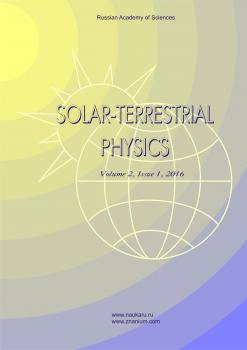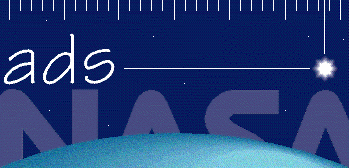Yakutsk, Russian Federation
Yakutsk, Russian Federation
We analyze variations of lightning activity presented by the lightning stroke number obtained by the World Wide Lightning Location Network (WWLLN) within the territory with boundaries 40–80° N and 60–180° E in 2009–2016. There are two regions with high lightning activity: western (48–60° N, 60–90° E) and eastern (40–55° N, 110–140° E). The lightning stroke density in these regions is 10–100 times higher than that in surrounding areas. The comparison between daily variations of lightning stroke number and the 10.7 cm solar radio flux shows no correlation: the linear correlation coefficient varied from –0.55 to 0.86 in the western region and from –0.78 to 0.39 in the eastern region during all summer seasons. During the ascending phase of solar cycle 24, there was a spatial lightning redistribution between the western and eastern regions of high lightning activity. During peaks of the solar cycle and its descending phase, the redistribution was not so pronounced as that during the ascending
lightning stroke, spatial distribution, World Wide Lightning Location Network
1. Abarca S.F., Corbosiero K.L., Galarneau T.J.Jr. An evaluation of the Worldwide Lightning Location Network (WWLLN) using the National Lightning Detection Network (NLDN) as ground truth. J. Geophys. Res. 2010, vol. 115, no. D18, pp. D18206.
2. Adzhieva A.A., Khorguani F.A. Rhythmic variations of lightning processes and solar activity. Doklady Adygskoi (Cherkesskoi) Mezhdunarodnoi akademii nauk [Rep. Adygskaya (Cherkesskaya) International Academy of Science]. 2010, vol. 12, no. 1, pp. 105-113. (In Russian).
3. Baldwin M.P., Gray L.J., Dunkerton T.J., Hamilton K., Haynes P.H., Randel W.J., Holton J.R., Alexander M.J., Hirota I., Horinouchi T., Jones D.B.A., Kinnersley J.S., Marquardt C., Sato K., Takahashi M. The quasi-biennial oscillation. Rev. Geophys. 2001, vol. 39, no. 2, pp. 179-229.
4. Boville B.A. The influence of the polar night jet on the tropospheric circulation in a GCM. J. Atmos. Sci. 1984, vol. 41, pp. 1132-1142.
5. Chronis T.G. Investigating possible links between incoming cosmic ray fluxes and lightning activity over the United States. J. Climate. 2009, vol. 22, pp. 5748.
6. Dowden, R. L., Brundell J. B., Rodger C. J. VLF lightning location by time of group arrival (TOGA) at multiple sites. J. Atmos. Solar-Terr. Phys. 2002, vol. 64, no. 7, pp. 817-879.
7. Harrison R.G., Usoskin I. Solar modulation in surface atmospheric electricity. J. Atmos. Solar-Terr. Phys. 2010, vol. 72, pp. 176-182.
8. Holton J.R., Tan H.-C. The influence of the equatorial quasi-biennial oscillation on the global circulation at 50 mb. J. Atmos. Sci. 1980, vol. 37, pp. 2200-2208.
9. Hutchins M.L., Holzworth R.H., Brundell J.B., Rodger C.J. Relative detection efficiency of the World Wide Lightning Location Network. Radio Sci. 2012, vol. 47, no. 6, pp. RS6005.
10. Khairullina G.R., Astafieva N.M. Kvazidvukhletnie kolebaniya v atmosfere Zemli. Obzor: nablyudenie i mekhanizmy formirovaniya [Quasi-Beinnial Oscillation in the Earth’s Atmophere. Review: Observations and Physical Mechanisms]. Moscow: IKI RAS, 2011. 60 p. (In Russian).
11. Kodera K., Yamazaki K., Chiba M., Shibata K. Downward propagation of upper stratospheric mean zonal wind perturbation to the troposphere. Geophys. Res. Lett. 1990, vol. 17, no. 9, pp. 1263-1266.
12. Owens M.J., Scott C.J., Lockwood M., Barnard L., Harrison R.G., Nicoll K., Watt C., Bennett A.J. Modulation of UK lightning by heliospheric magnetic field polarity. Environmental Res. Lett. 2014, vol. 9, no. 11, pp. 115009.
13. Pinto Neto O., Pinto I.R.C.A., Pinto O.Jr. The relationship between thunderstorm and solar activity for Brazil from 1951 to 2009. J. Atmos. Sol.-Terr. Phys. 2013, vol. 98, pp. 12-21.
14. Raspopov O.M., Mullayarov V.A., Dergachev V.A. About coupling of solar and lightning activities. Trudy 31 konferentsii po kosmicheskim lucham [Proc. 31st Russian Conference on Cosmic Rays]. Moscow, 2010, pp. GEO_36. (In Russian).
15. Rycroft M.J. Thunder and lightning - what determines where and when thunderstorms occur? Environmental Res. Lett. 2014, vol. 9, no. 12, pp. 121001.
16. Scott C.J., Harrison R.G., Owens M.J., Lockwood M., Barnard L. Evidence for solar wind modulation of lightning. Environmental Res. Lett. 2014, vol. 9, no. 5, pp. 055004.
17. Siingh D., Kumar P.R., Kulkarni M.N., et al. Lightning, convective rain and solar activity - over the south/southeast Asia. Atmos. Res. 2013, vol. 120-121, pp. 99-111.
18. Tarabukina L.D., Kozlov V.I., Karimov R.R., Mullayarov V.A. Spatial distribution of lightning strikes over North Asia. Proc. SPIE. 21st International Symposium on Atmospheric and Ocean Optics: Atmospheric Physics. 2015, vol. 9680, pp. 96805S.

















